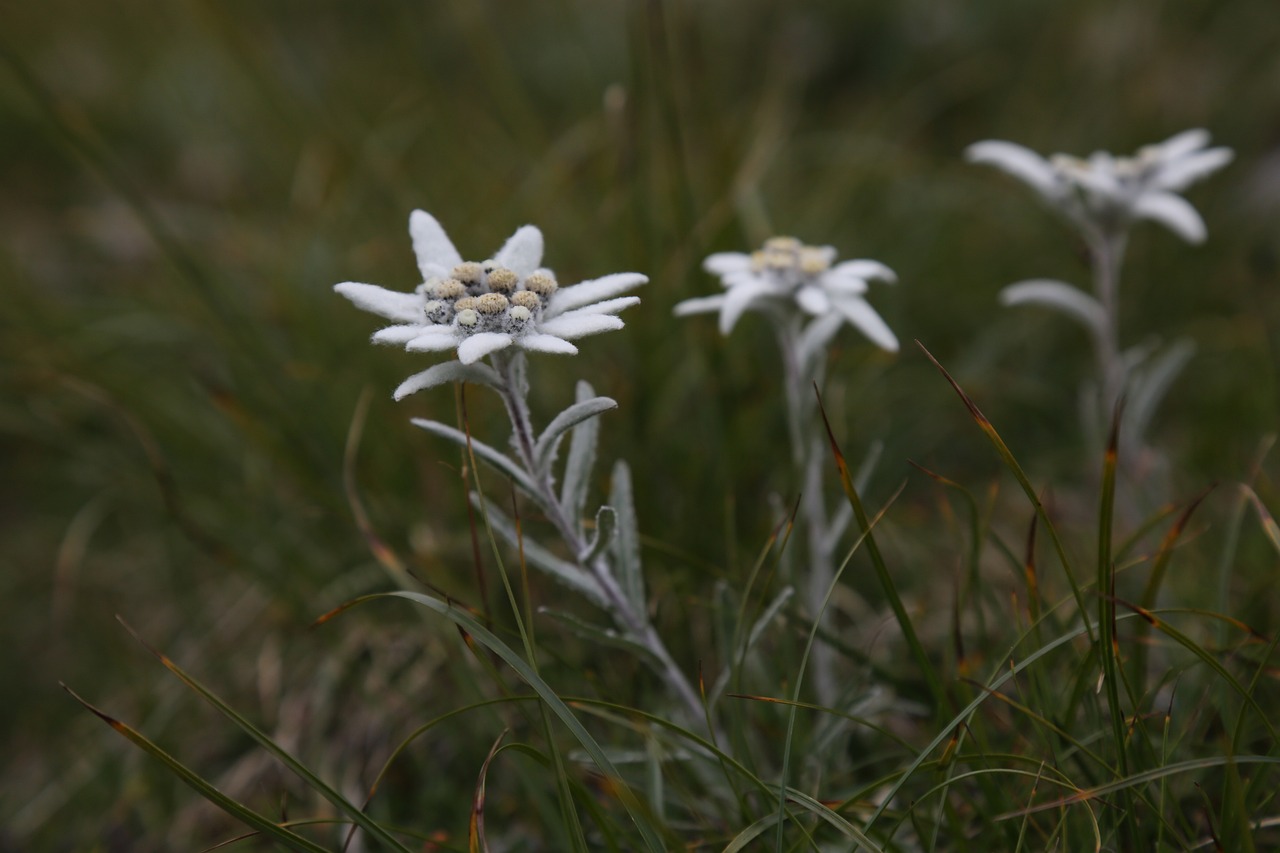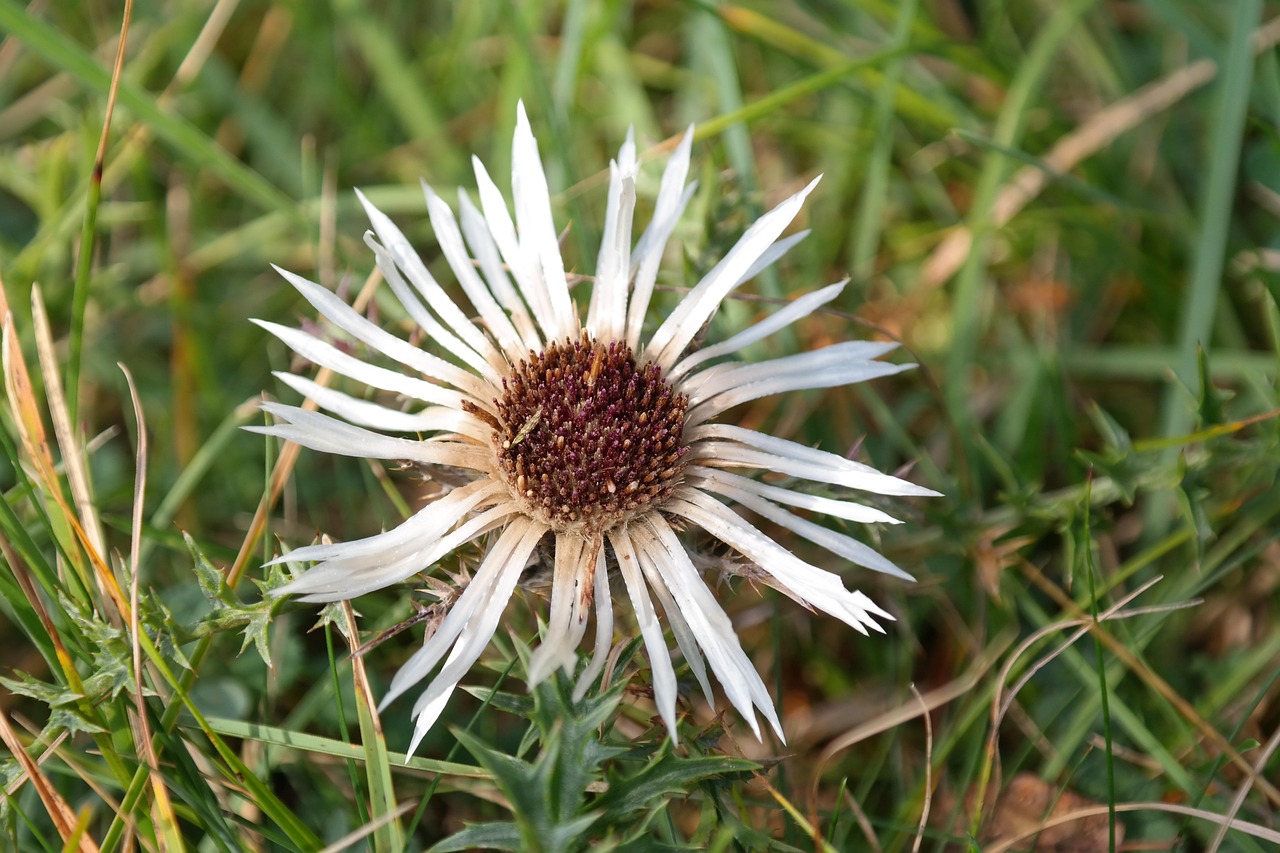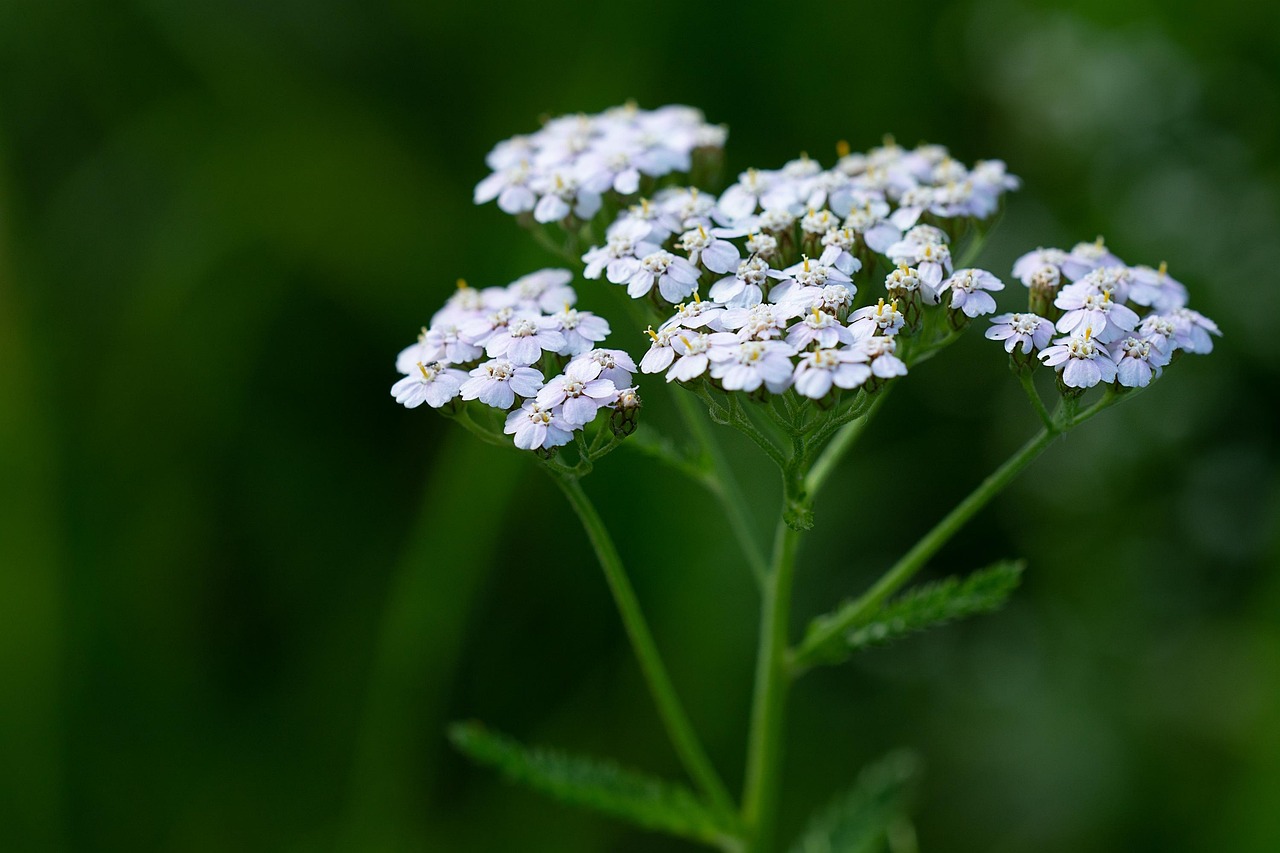Ageratum | Delicate Blooms in Soft Colors
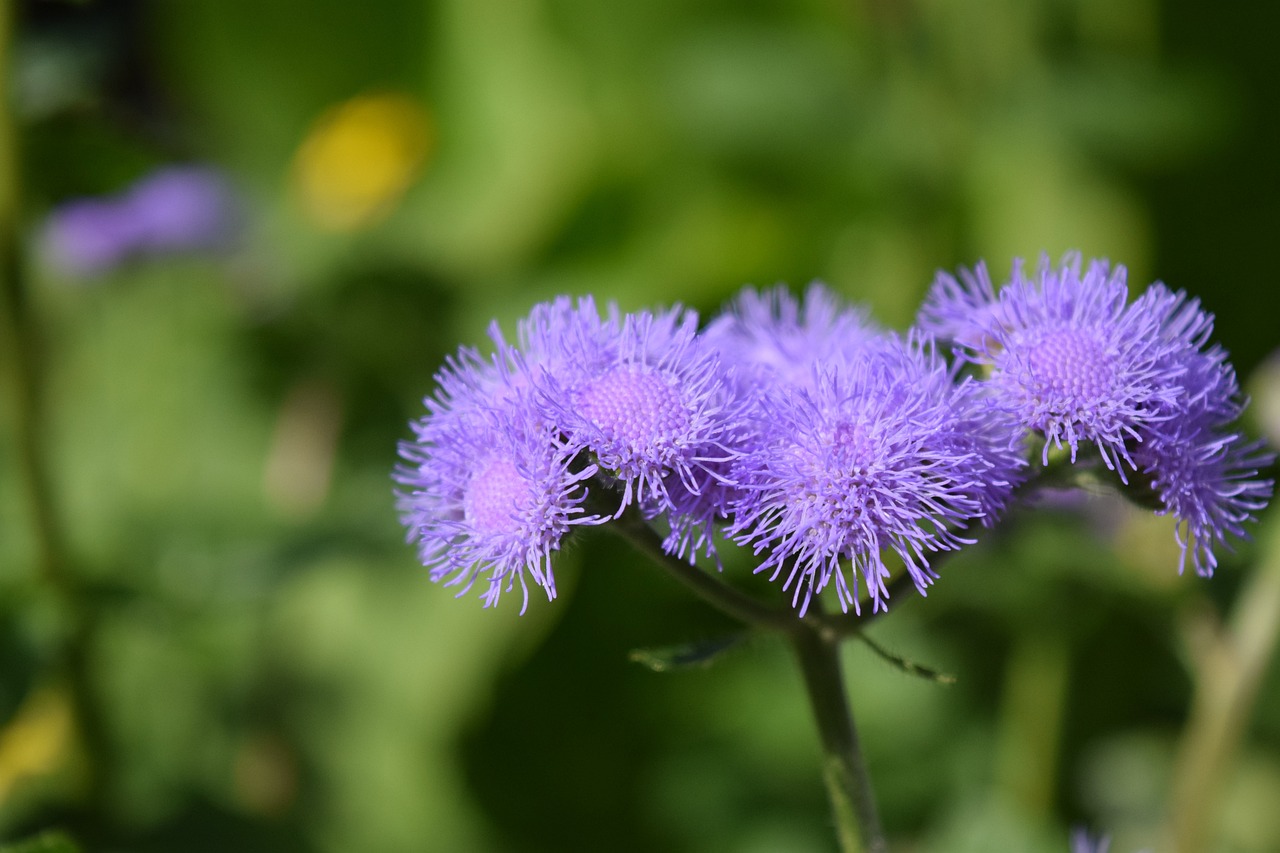
Ageratum is a charming flower that produces clusters of small blossoms in vivid violet-blue and soft pink shades.
Because of its long-lasting blooming period, it is also known as “Floss Flower” or “Cuckoo Aster,” and is popular in gardens, flower beds, and potted arrangements.
In this article, I will provide detailed information on the basic characteristics of ageratum, its cultural background, and gardening tips.
Basic Information
- Scientific name: Ageratum houstonianum
- Family: Asteraceae
- Origin: Central America (primarily Mexico)
- Appearance: Ageratum produces fluffy, rounded clusters of tiny flowers in violet-blue, pink, and white. With a relatively short height of 10–50 cm, it spreads to cover the ground, making it ideal for borders and ground cover.
- Blooming season: From spring to autumn (April–October), flowering continuously for an extended period.
Cultural Significance Worldwide
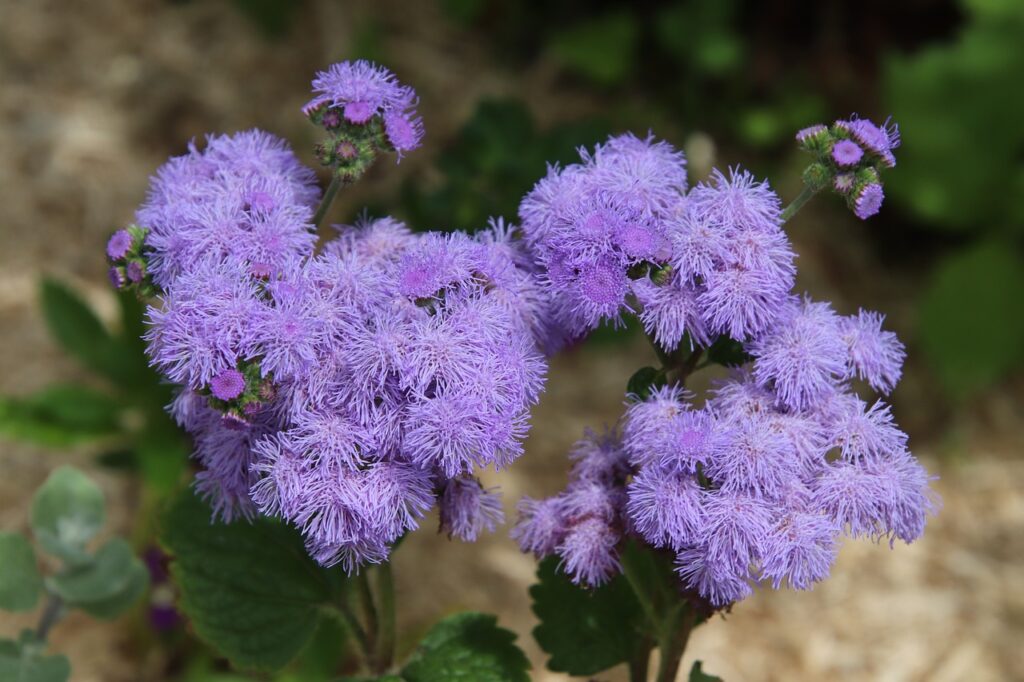
Ageratum is especially popular in North America as an ornamental plant, widely cultivated in parks and gardens.
Its flower language is “trust” and “stability,” reflecting its durability and persistence.
The violet-blue color of ageratum blends well with other flowers, making it a favorite among gardeners for mixed plantings and as an accent in flower beds.
In some countries, it is commonly known as “Floss Flower,” a name inspired by its delicate and fluffy appearance.
Because of its vivid colors and long blooming period, ageratum is frequently seen in summer flower beds and public parks.
Historical Background
The scientific name Ageratum derives from the Greek word meaning “ageless,” referring to its long-lasting and unfading blossoms.
It became widespread as a garden plant around the 19th century, with violet-blue varieties in particular gaining popularity.
Ageratum is also suitable as a cut flower. Thanks to its vibrant colors and longevity, it is often used in floral arrangements.
Today, with the progress of plant breeding, colors beyond violet-blue, such as pink and white, can also be enjoyed.
Gardening Advice
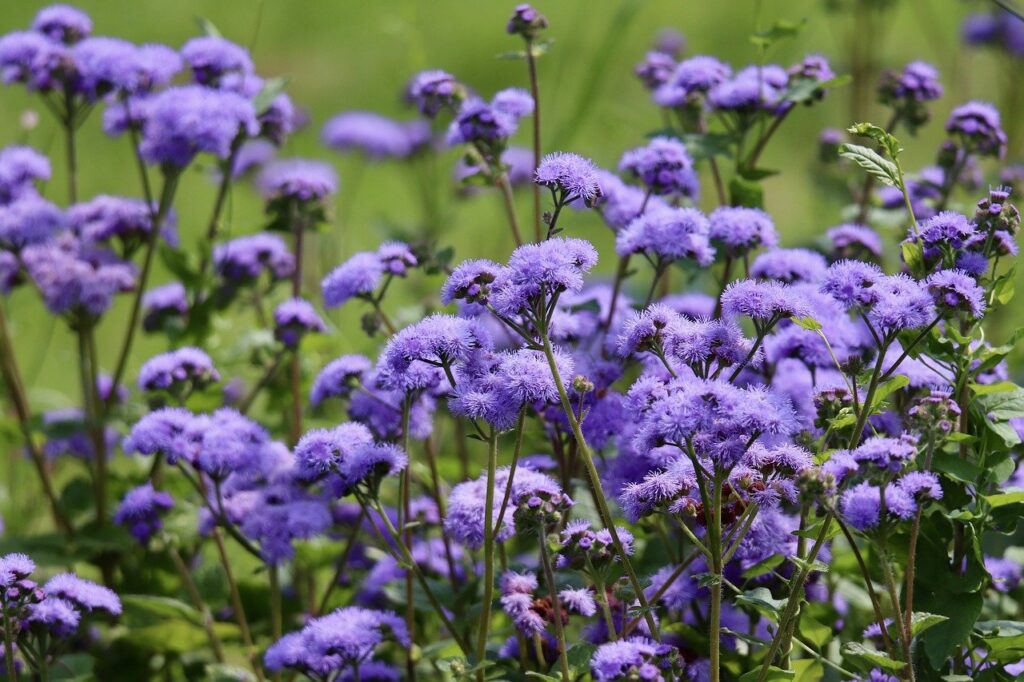
Ageratum prefers sunny locations but can also grow well in partial shade. It thrives in well-drained soil, and watering generously when the soil dries helps maintain healthy growth.
Ensuring good air circulation reduces the risk of pests and diseases.
For fertilization, I recommend using slow-release fertilizer at planting and applying additional fertilizer about once a month during the growing season.
By regularly removing spent flowers, you can encourage new blooms and enjoy a prolonged flowering period.
Conclusion
Ageratum brings charm and elegance to gardens and flower beds with its beautiful violet-blue blossoms.
Its long blooming season and ease of care make it an excellent choice for beginners.
I encourage you to grow ageratum and enjoy its seasonal colors throughout the year.

